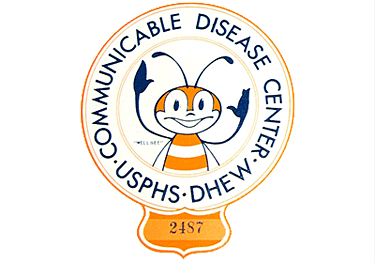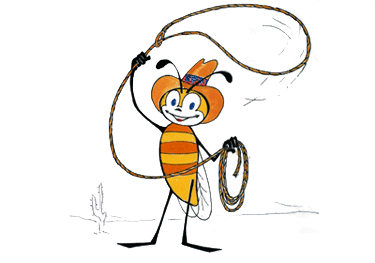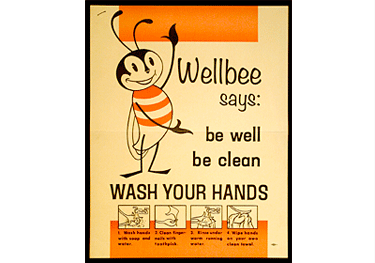Wellbee, the 'health educator's friend'
More than 50 years ago, when CDC was still the Communicable Disease Center, Public Information Officer George M. Stenhouse wanted to develop a public health symbol that could be used by all state and local public health agencies in the U.S.. In response, staff artist Harold M. Walker, who had previously worked as an animator in Hollywood on cartoons such as “Felix the Cat,” took to his drawing board to design Wellbee, a cartoon character that exemplified “wellbeing.”
Wellbee was first introduced to the public on March 11, 1962, in The Atlanta Journal-Constitution newspaper.
According to a March 9, 1962 press release, Wellbee is “a pleasant-faced, bright–eyed, happy cartoon character, who is the personification of good health.” CDC designed a comprehensive marketing campaign that used newspapers, posters, leaflets, radio and television, as well as personal appearances at public health events. Wellbee’s first assignment was to help promote Sabin type II oral polio vaccine in Atlanta and across the United States, from Massachusetts to Hawaii and Alaska.
Wellbee’s future assignments included other health promotion campaigns, such as diphtheria and tetanus immunizations, hand-washing, physical fitness, oral health promotion, and injury prevention.
Mr. Stenhouse announced in a February 1963 memo to members of the Conference of State and Territorial Directors of Public Health Education that “Wellbee, the ‘health educator’s friend,’ had a busy year. He was particularly active in promoting community polio programs. He spoke Spanish in New Mexico; he came to life in costume in Hawaii and led a parade.” On CDC campuses, a Wellbee decal was placed on employee windshields to help identify cars in the parking lot.
- Page last reviewed: January 9, 2015
- Page last updated: January 9, 2015
- Content Source:
- Centers for Disease Control and Prevention
- Page maintained by: Office of the Associate Director for Communication, Division of Public Affairs


 ShareCompartir
ShareCompartir



